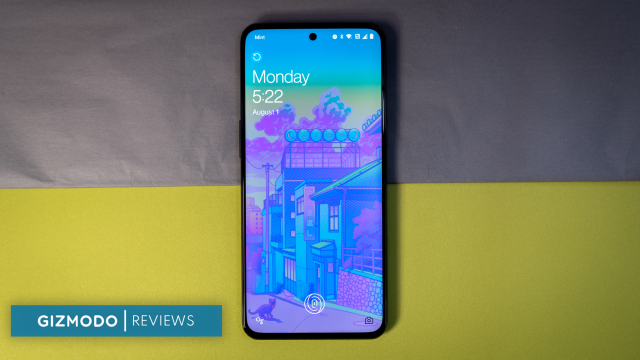OnePlus has something to prove. The company is the Android underdog, but now that it’s under the umbrella of a bigger brother — its parent company, Oppo — it needs to act like it belongs in the number three spot. The OnePlus 10 Pro was an impressive flagship release, though it worried us that OnePlus launched only one variant and at such a high price. It turns out that’s because OnePlus had plans for this: the 0 T, which is like the 10 Pro, but more positioned for what the company calls “ultimate performance.”
The OnePlus 0 T is purely a power user’s device. It offers the latest bump up in Qualcomm’s processing power and has the most RAM available on a OnePlus phone if you’re willing to pay for it. It houses a smaller battery than the 10 Pro, but it’s more efficient and charges way faster. It’s also equipped with a better camera sensor than the 10 Pro, which produces night shots almost as clear as the Pixel 6’s. But the most exciting part of the OnePlus 0 T is that the company is back to its signature “budget” pricing. This well-equipped premium Android smartphone starts at $US650 ($902), much less than what the 10 Pro cost right out of the gate, and even less than Samsung and Google’s current crop of high-powered flagships.
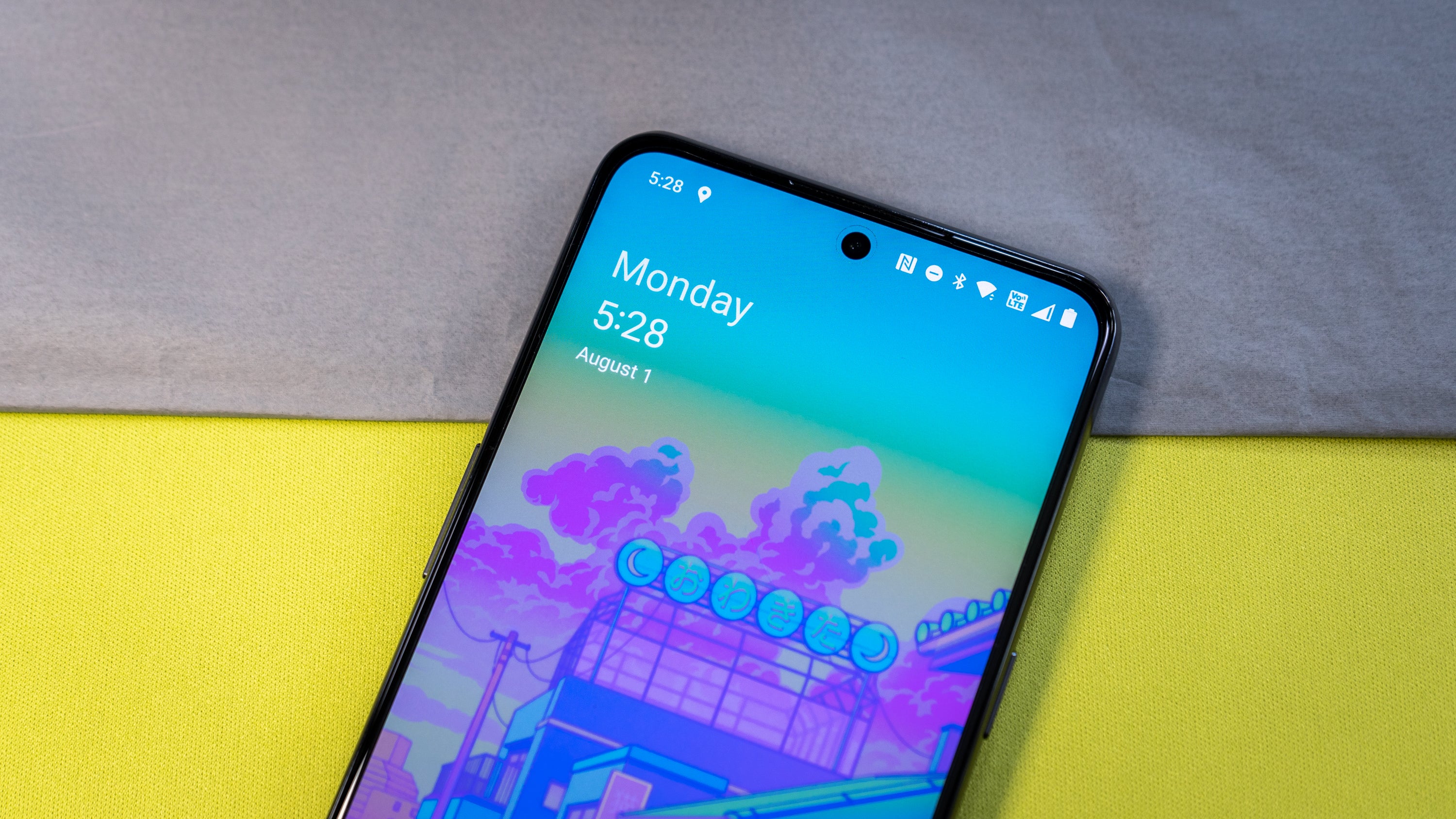
OnePlus 0 T
What is it?
A mid-year Android phone release from OnePlus
Price?
Starts at $US650 ($902) for 8GB/128GB; $US750 ($1,041) for 256GB/16GB
Like
Long battery life, cameras are better at night, available with 16GB of RAM
Dislike
Volume slider is gone, fast charging capabilities are proprietary, no carrier availability yet
The volume slider is gone but not forgotten
If you’re looking for a big Android phone, the OnePlus 0 T should be on your radar. It’s longer than the Samsung Galaxy S22+ by about .2 inches, though it’s also slightly narrower, so it doesn’t feel as bulky. I prefer “taller” smartphones because they give me an easier grip.
The OnePlus 0 T comes in two colours: Moonstone Black and Jade Green, the latter of which I wish OnePlus sent me for review. It just looks so nice in renders, but I can’t speak to it here. Instead, I got the Moonstone Black variant, which has an attractive textured back that, thankfully, doesn’t slip and slide around like those other glass-backed phones making the rounds. The Jade Green variant is not textured.
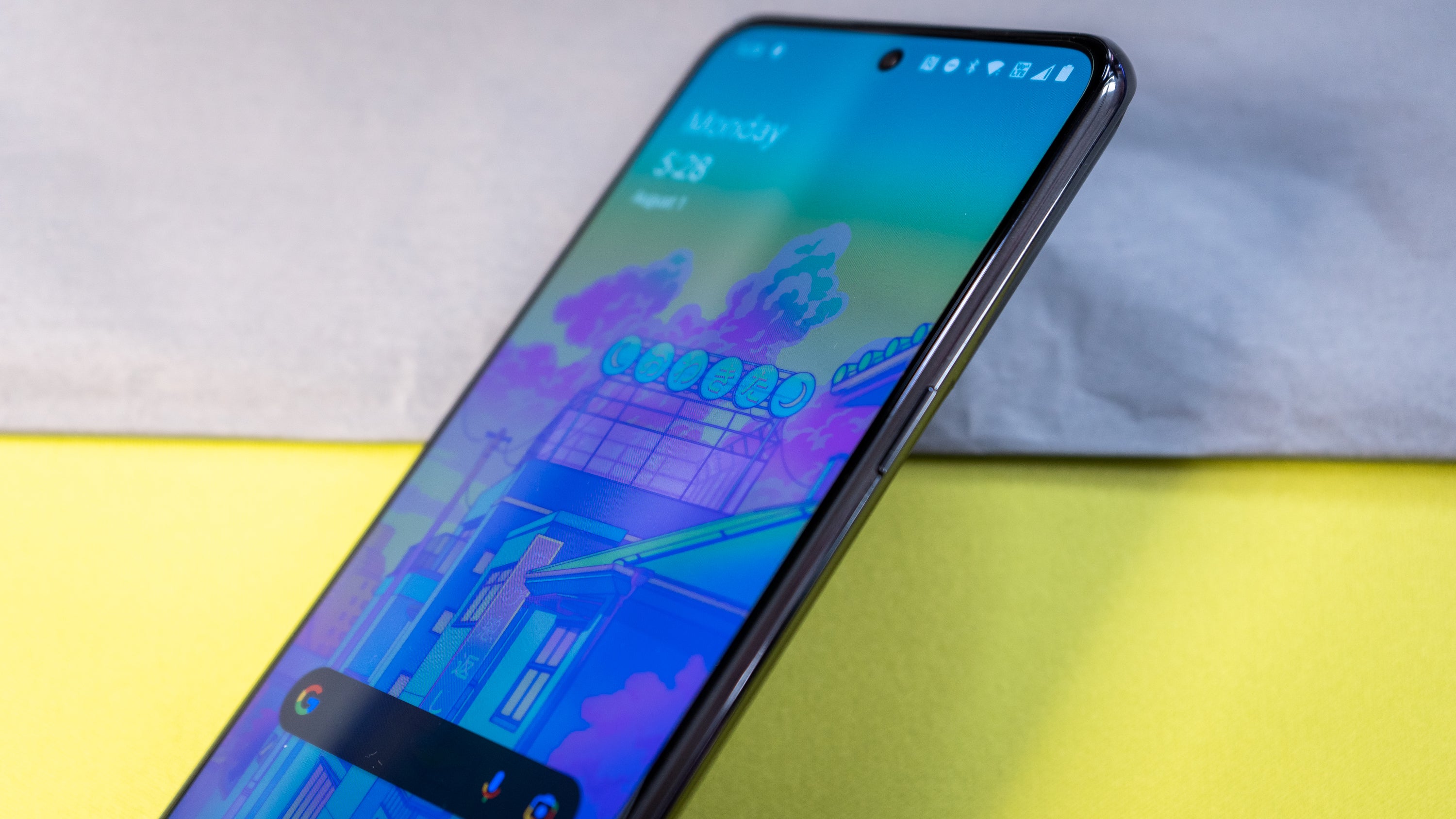
Before we move on: Yes, the volume slider on the OnePlus 0 T has gone the way of the dodo, at least on this particular model. The volume slider had became a defining feature of the OnePlus devices, since it made it simple to switch between ringer profiles — like on the iPhone. OnePlus even released a statement acknowledging the removal of the volume slider, claiming it was “a necessary trade-off” for the overall design of the 0 T. OnePlus says the omission was to make room for “high wattage charging, a large battery capacity, and better antenna signal.” The company even noted how much physical change had to be done to the device to remove that slider:
Our design team increased the layout utilization rate of the OnePlus 0 T’s motherboard to 78%, up from our typical standard of 74%. While the alert slider appears to be a very small component, it actually has a relatively large impact on the device’s motherboard area – taking up 30 mm2.
In exchange, you get SUPERVOOC Endurance charging capabilities, which OnePlus hopes will tide you over until it can figure out how to bundle all that and the volume slider. The company promises it “plans to overcome this technical and design challenge” on its future devices to retain its signature alert slider.
Hallelujah for that. Seriously — I’ve been using a OnePlus 9 for over a year and used a OnePlus 8 before that. It’s much simpler to switch it off with a quick thumb slide rather than navigate to the volume controller in Android to ensure that the ringer is off or that the phone is entirely silent. Life is better with a physical alert slider. But we can’t give the 0 T points for it.
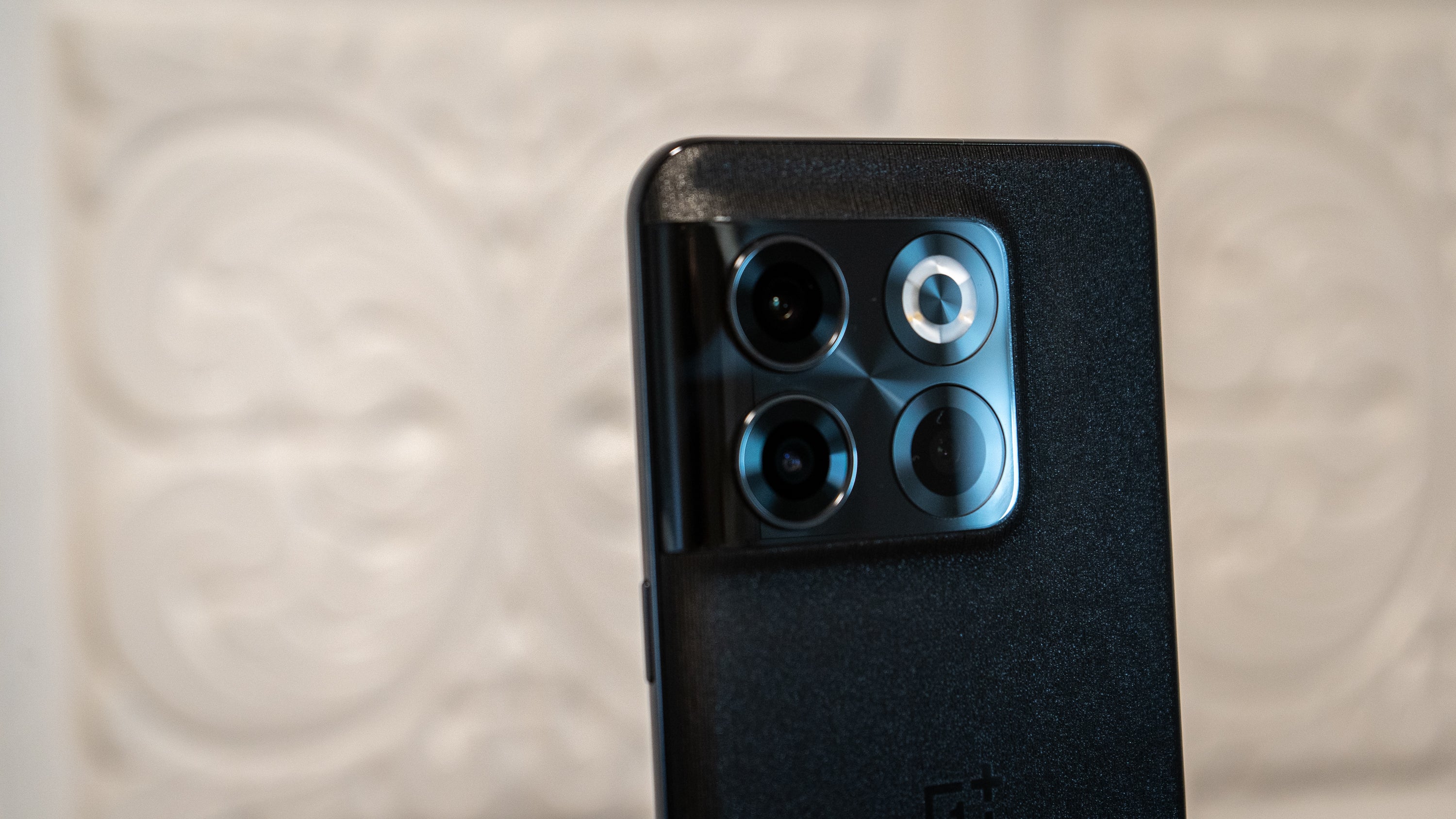
The OnePlus 0 T has a 6.7-inch Full HD+ display with a 120Hz adaptive refresh rate and a peak brightness of 950 nits, though it only comes in when it’s on auto brightness mode. Otherwise, it’s a maximum of about 509 nits adjusting it manually. As for the refresh rate, you can dial it down to 60Hz when it needs a battery boost. It’s nice to have that option for days when you might be out and don’t require that smoothness.
OnePlus’s displays aren’t as vibrant or saturated as a Samsung Galaxy’s AMOLED one. But the OnePlus 0 T’s display is HDR10+ certified, so colours appear bright and balanced. Different screen colour modes are also available in the settings panel, including a Pro mode that ups the gamma to make the screen brighter. I don’t know that many people will venture into this part of the settings panel, but it’s nice to see it offered.
If you plan to play games or read while watching a streaming video with picture-in-picture, the OnePlus 0 T is a perfect size, provided you don’t mind the large screens that come on premium Android phones. The display size of the OnePlus 0 T is about standard for premium Android smartphones in this category. Only the Galaxy S22+ is smaller than the OnePlus 0 T, but by a measly .1-inch, while the Google Pixel 6 Pro and OnePlus 10 Pro are the same screen size.

OnePlus’s in-display fingerprint scanners have been a welcome respite from the inconsistent experience on the Pixel 6 Pro. The OnePlus 0 T feels just as responsive as the last three OnePlus devices I’ve tested, though it feels less forgiving of the side thumb than those other phones. The 0 T can also do Face Unlock, which I found to be responsive indoors, but a little less on the mark when wearing a hat and mask. I wish Android were clearer about when the feature is in use, akin to iOS’s Face ID, which pops up a little icon so you know that the unlocking mechanism is doing its job.
Stability in Snapdragon
I used the OnePlus 0 T on the Mint SIM network throughout this review. OnePlus says it placed components within the body to ensure antenna performance was its most potent and so far, so good.
The OnePlus 0 T is powered by a Snapdragon 8+ Gen 1 processor. It has two configurations: 8GB of RAM with 128GB of storage or 16GB of RAM with 256GB. OnePlus sent me the latter variant, and the RAM count seems a bit overkill for a device this size. Granted, I’ve been operating with a minimum of 12GB for the last two years, and it’s helpful with situations involving augmented reality, for instance. It’s also beneficial to have that extra runway as the phone ages. But doubling the RAM also increases the pricepoint by about $US100 ($139), so the OnePlus 0 T jumps to $US750 ($1,041). The Pixel 6 Pro starts at the same price, but with only 128GB of storage space, which is not enough for a power user.
The Snapdragon 8+ Gen 1 is technically the bump-up to the regular Snapdragon 8 Gen 1 that launched earlier this year on competing flagships like the Samsung Galaxy S22 and its predecessor, the OnePlus 10 Pro. The benchmark numbers were slightly better on this than on those two smartphones, but not by much. The Geekbench numbers for the 0 T were only higher by about 200 points. What stood out was how the processor performs alongside the Google Tensor chip in the Pixel 6a. The Compute benchmark numbers were better for Google’s decidedly mid-range Pixel. That benchmark looks at a system’s ability for tasks like image processing and video editing.
Anyway, there is no palpable difference in performance between the two devices as I used them. They both play games and can handle the annoying tasks I throw at them, like switching rapidly between apps using Android’s multitasking menu. As I alluded to earlier, my favourite ability is having a streaming video in picture-in-picture while checking in on Pokémon Go in the background. The OnePlus 0 T can most likely handle what you throw at it.
The OnePlus 0 T boasts a very PC-like feature: a 3D Cooling System that the company says is its “largest and most advanced ever.” I will say that the 0 T didn’t feel as hot as some of the other flagships I tested this year, but I also didn’t review this smartphone during a heatwave.
The Snapdragon 8+ Gen 1 boasts better battery life than its predecessor. Indeed, the OnePlus 0 T pulled in impressive numbers. The 4800 mAh battery lasted almost as long as the Pixel 6a’s smaller 4410 mAh battery and even longer than the two smaller Galaxy S22 models, which also have smaller batteries. It lasted 17 hours and 39 minutes in Gizmodo’s battery rundown test, which is also on par with how the OnePlus 10 Pro’s 5000 mAh battery performed. Only the smaller-sized Pixel 6 outlasted the OnePlus 0 T in this year’s flagship battery tests.
It’s a super fast charger

OnePlus has always been a harbinger of proprietary fast-charging abilities. Despite the exclusive nature, I tend to gravitate toward these technologies because I am busy and want a phone that moves fast. The OnePlus 0 T boasts “boosted” charging abilities using SuperVOOC Endurance charging, which the company says can deliver up to a day’s worth of use in just ten minutes on the cable.
Before we get to the results: VOOC stands for Voltage Open Loop Multi-step Constant-Current Charging, a charging standard implemented by the Oppo family of devices. It’s already in use on Oppo and RealMe devices sold overseas. Oppo announced the 0 T’s SuperVOOC ability earlier this year at Mobile World Congress. It uses a “Battery Health Engine” to optimise charging based on how much energy it needs and the battery’s overall chemistry. Oppo also promises that the battery will maintain 80% of its original capacity over its lifespan while offering fast charging speeds. But that latter claim can only be put to test after at least four years of charging the 0 T.
At the very least, it’s a hell of a fast charger. The OnePlus 0 T slurped up 16% battery in two minutes on its SUPERVOOC-compatible charger and 40% battery in just 8 minutes. It took 15 minutes for the phone to charge fully, about 75% of the way through. The only caveat is that you need the specific 160W charging brick (limited to 125W in the U.S.) and signature red cable to get these numbers. But it was nice not having to wait around for this smartphone to charge.
Great cameras, but not the Pixel’s
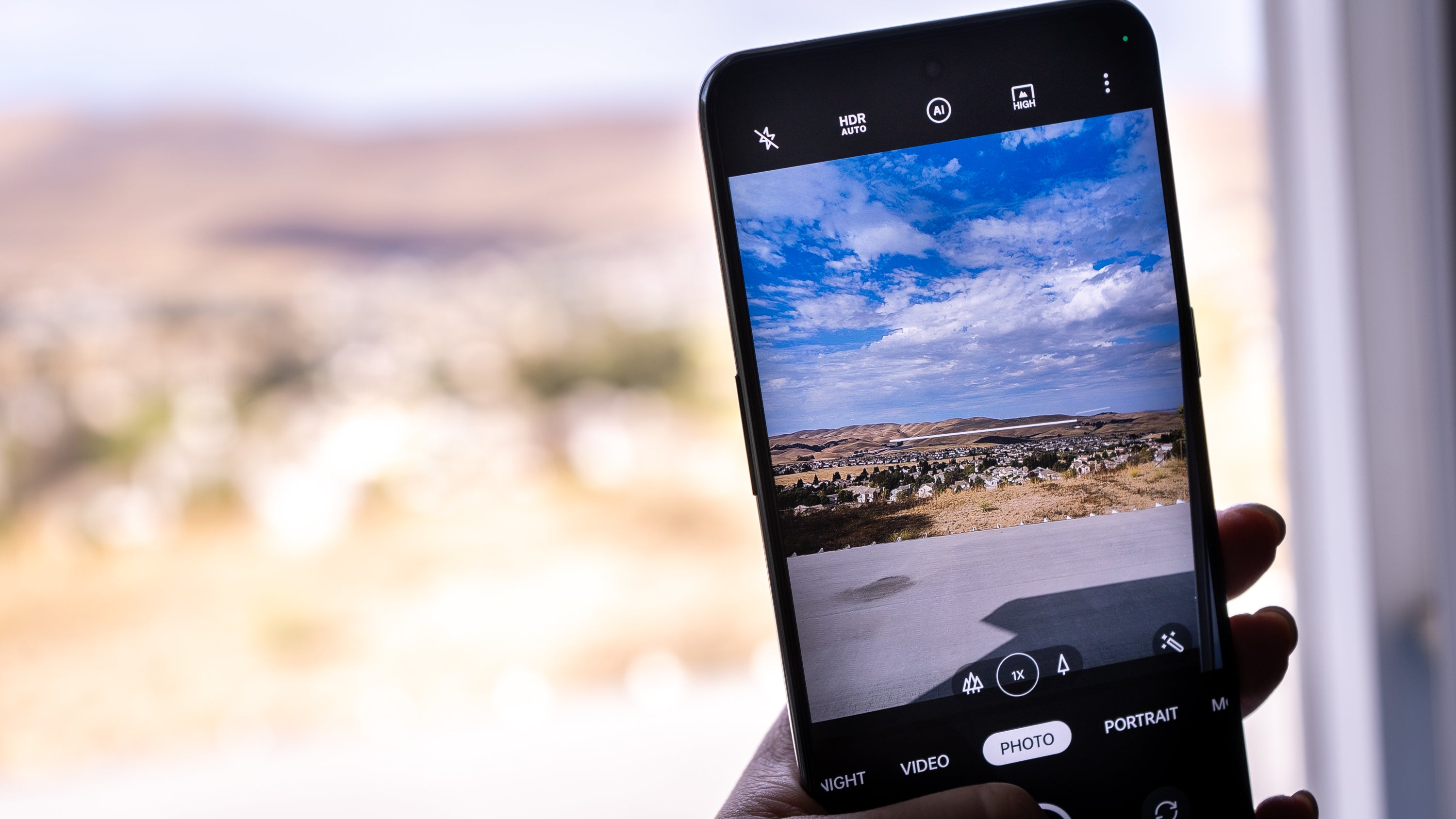
The OnePlus 0 T has three cameras on the back, along with a giant dual LED flash. The primary camera is a 50-MP Sony IMX766 sensor with OIS and an aperture of f/1.8. There’s also an 8-megapixel ultra-wide camera with a nearly 120-degree field of view and a 2-MP macro camera. The front-facing camera is a 16-megapixel lens with an aperture of f/2.4. OnePlus did not partner with Hasselblad for this particular camera configuration like it did with the last few generations of its flagships.
The OnePlus 0 T seems tuned in the same vein as its predecessors. The colours are yellow-toned compared to the Pixel 6 Pro’s blue-tone hues, and I dialed down the colour temperature on some photos before sharing them on social media. The 0 T’s toning can be aggressive, and it also seems to change depending on the focus.

However, I was impressed with the overall improvements OnePlus has made to the cameras. Daytime shots are different than on the Pixel 6 because of that colour tuning, but sometimes I preferred the 0 T’s richness to the Pixel 6’s bump in clarity. OnePlus still offers colour filters built into the camera app, and there’s a “high megapixel” mode if you want to tap into the raw abilities of the 50-MP sensor.
Where the 0 T notably improved was with its night shot capabilities. There’s a “tripod mode” that you can toggle on while you’re shooting in night mode, and it will keep the shutter open for about 30-seconds to take in light. It’s not as bright or clear as the Pixel 6’s capabilities, as Google’s camera app will keep the shutter open for up to five minutes if you let it. But with every new improvement OnePlus makes to its low-light shooting abilities, I feel less regretful not having a Pixel on hand.
Phones with different types of lenses are helpful in this day and age. You never know when you need a macro shot of something small or when the clouds are so incredible you want a wide-angle shot of their beauty. My complaint with the OnePlus 0 T — which still bothers me on the OnePlus 9 — is that the primary camera is too angled in its field of view. I often rely on the 2x zoom-in to get a shot that feels flat, which doesn’t always produce the best photo. Also, the portrait mode remains subpar compared to the Pixel’s abilities.

The OnePlus 0 T is excellent for video. The phone can shoot 4K, 1080p, and 720p videos at a maximum of 60 frames-per-second (fps). It can do slow motion and time-lapse. There’s also a movie mode buried in the camera settings that gives you more functionality to adjust things like shutter speed and toggle-on LOG, which helps preserve dynamic range. I will likely never use that feature, but this integration makes it clear that OnePlus is going after the enthusiast crowd.
Oxygen OS: The Oppo effect
I tried hard not to fret over the impending changes to OxygenOS based on leaks and rumours. But alas, I’m worrying. The onboarding experience to get the OnePlus 0 T’s Home screen looking like I want is so overwhelming that I’m still taking baby steps. OnePlus’s OxygenOS 12.1 is based on Android 12, but you get very little of Google’s Material You-stylings. The upside to being an Android user: you can change things if you don’t like them or try on another launcher if the one your smartphone ships with doesn’t suit you.

OnePlus will push out OxygenOS 13 in just a bit, which launches first on the OnePlus 10 Pro. It will roll out to the OnePlus 0 T later this year and have all the same perks as Android 13, including audio switching capabilities, fast pairing, and enhanced security and privacy features. I’ll have more on that when it launches.
In terms of Android updates, OnePlus promises three major Android updates and four years of security updates. It’s on par with Samsung’s offerings, and only Google’s Pixel lineup will offer you more support.
Almost a great deal
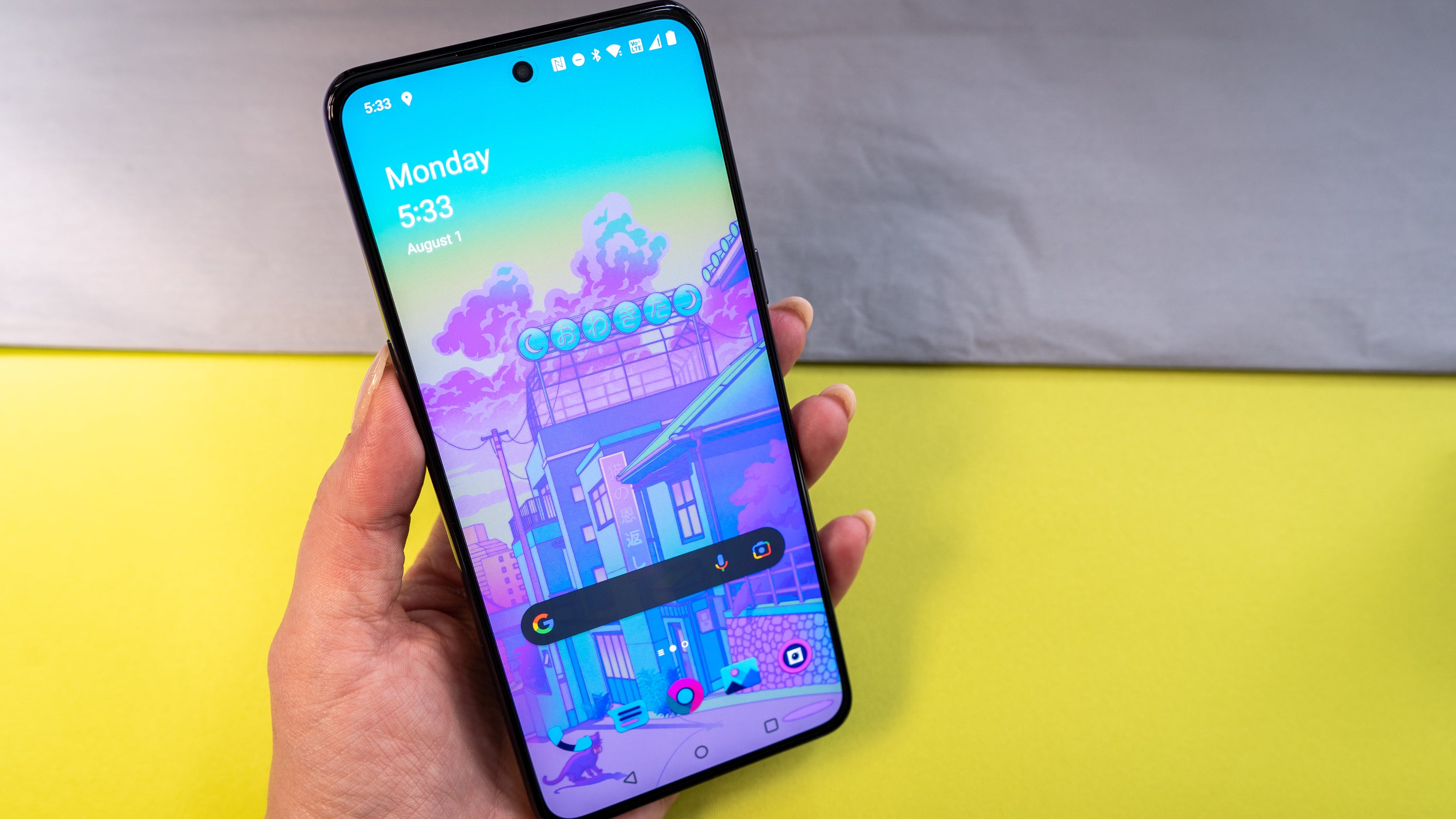
OnePlus seems to be positioning itself as the “great deal!” among the Android heavyweights already competing, and, interestingly, its “ultra” version is priced lower out of the gate than the flagship it launched earlier this year. Indeed, the 0 T is a deal: it’s packed to the gills with everything OnePlus is known to offer, including fast charging and more camera capabilities than you know what to do with. It also offers a long battery life that outlasted another ultimate flagship, the Galaxy S22 Ultra.
The OnePlus 0 T remains a viable choice for anyone exhausted by the pricing of Samsung’s smartphones or who isn’t drawn to Google’s Pixel flagship simply based on its camera capabilities. It’s a wonder if the company will be able to move enough units by the time the Pixel 7 arrives, however. That phone is due sometime in October if rumours are to be believed, while the OnePlus 0 T won’t be on sale until Sept. 29. There are also no carrier announcements at this time, which could make this great deal harder to stomach for some folks.
